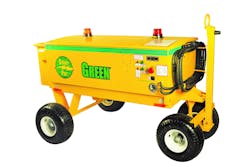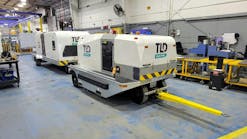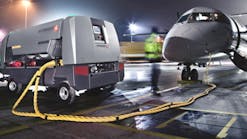Start Pac Launches “Start Pac Green,” Its New Environmentally Friendly Ground Unit
Start Pac, the world leader in ground power units, has designed the START PAC GREEN (patent pending), a unique modular battery-powered ground power unit to replace diesel- and gas-powered units.
The new “START PAC GREEN” has been launched with the aim of replacing diesel power units (GPU), whilst providing the same service to create a greener working environment. This GPU is entirely battery powered and does not require an internal combustion engine for power.
The majority of non-transport aircraft operate on the 24-volt direct current system (VDC). These aircraft need to be powered up for ground-based operations and their on-board batteries are inadequate, therefore there is a need for an external power supply source from a ground power unit.
Currently, most GPUs are powered with diesel engines, which are loud, environment polluting, expensive to run and maintain. To address this problem, airports worldwide are requiring diesel- and gas-powered units to be replaced with battery powered electric models.
Start Pac’s “START PAC GREEN” is the first of its kind and has been specifically designed to replace these old, polluting GPUs. The START PAC GREEN has several unique features:
- A larger battery bank for powering up the aircraft systems for extended periods of time.
- A smaller battery bank for engine starting.
- The starting battery bank can be removed from the ground power unit when a portable unit is required.
- Built-in battery chargers to replenish both battery banks.
Pollution and emission standards are becoming stricter on internal combustion engines and therefore more airports worldwide are going “green” by replacing diesel- and gas-powered units with electric units.
Airports account for 10 percent of emissions in some urban areas and conventional fuel ground support equipment is the main source, even exceeding the emissions of aircraft. The “START PAC GREEN” offers emission-free operations and consumes electricity with an efficiency of approximately 80 percent, while fuel-powered vehicles are typically limited to efficiency below 20 percent.




